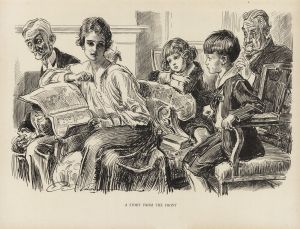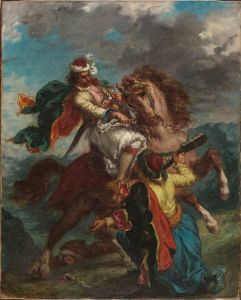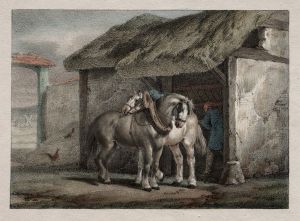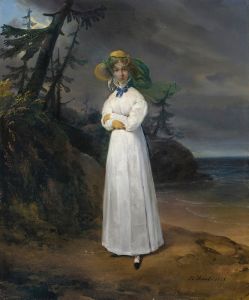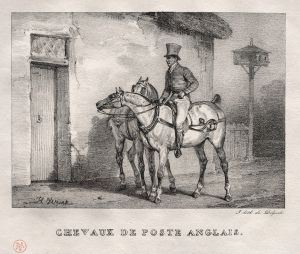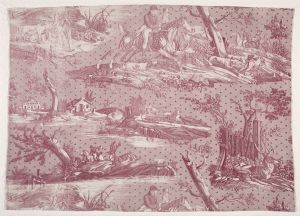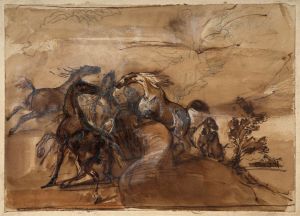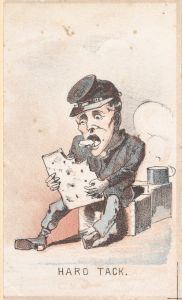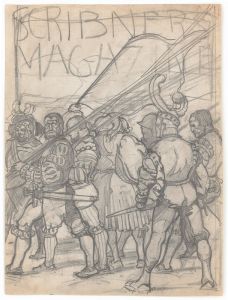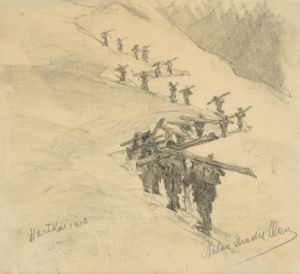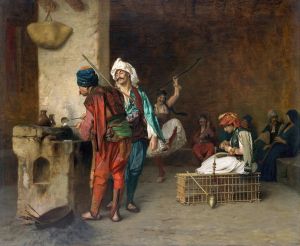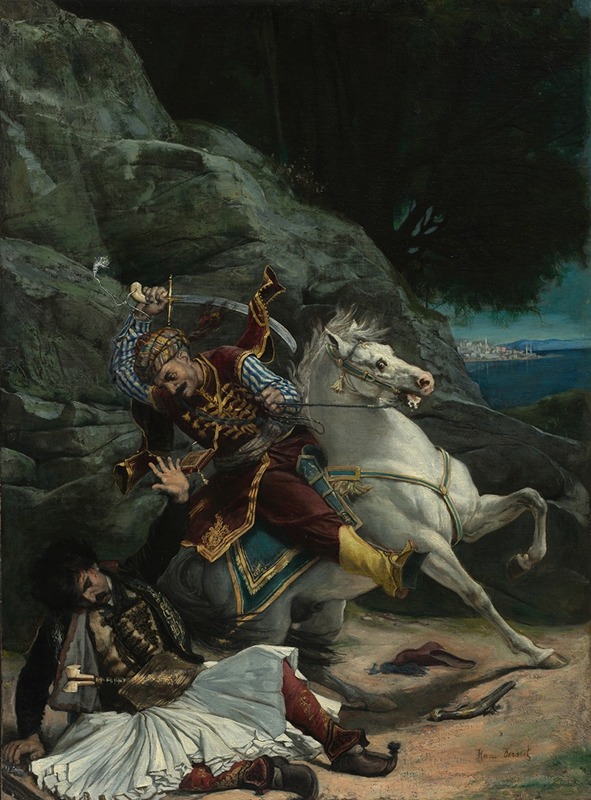
Combat of a Greek and a Turk
A hand-painted replica of Horace Vernet’s masterpiece Combat of a Greek and a Turk, meticulously crafted by professional artists to capture the true essence of the original. Each piece is created with museum-quality canvas and rare mineral pigments, carefully painted by experienced artists with delicate brushstrokes and rich, layered colors to perfectly recreate the texture of the original artwork. Unlike machine-printed reproductions, this hand-painted version brings the painting to life, infused with the artist’s emotions and skill in every stroke. Whether for personal collection or home decoration, it instantly elevates the artistic atmosphere of any space.
"Combat of a Greek and a Turk" is an oil painting created by the French artist Horace Vernet in 1826. Vernet, born on June 30, 1789, in Paris, was a prominent painter known for his works depicting military scenes and historical events. He was part of a family of artists; his father, Carle Vernet, and his grandfather, Claude Joseph Vernet, were also notable painters.
The painting "Combat of a Greek and a Turk" is set against the backdrop of the Greek War of Independence, which took place from 1821 to 1830. This war was a successful struggle by the Greeks to gain independence from the Ottoman Empire, which had ruled Greece for several centuries. The conflict was marked by numerous battles and significant international interest, particularly from European powers who were sympathetic to the Greek cause.
In the painting, Vernet captures a dramatic and intense moment of hand-to-hand combat between a Greek fighter and a Turkish soldier. The composition is dynamic, with the two figures locked in a fierce struggle, highlighting the brutality and personal nature of the conflict. Vernet's attention to detail is evident in the depiction of the fighters' costumes and weaponry, which are rendered with historical accuracy.
The Greek combatant is shown wearing traditional Greek attire, including the fustanella, a pleated skirt-like garment, and a red fez. He is armed with a sword, which he uses to engage his Turkish opponent. The Turkish soldier, on the other hand, is depicted in Ottoman military dress, complete with a turban and a curved scimitar. The background of the painting is relatively sparse, focusing the viewer's attention on the central action and the physicality of the combatants.
Vernet's work is notable for its vivid portrayal of the human element in warfare. Rather than depicting large-scale battles or strategic maneuvers, he often chose to focus on individual acts of bravery and the personal experiences of soldiers. This approach is evident in "Combat of a Greek and a Turk," where the viewer is drawn into the immediacy and intensity of the fight.
The painting reflects the Romantic era's fascination with exoticism and the heroism of revolutionary struggles. During this period, many European artists and intellectuals were inspired by the Greek War of Independence, seeing it as a noble fight for freedom against tyranny. Vernet's painting can be seen as part of this broader cultural movement, which celebrated the ideals of liberty and national identity.
"Combat of a Greek and a Turk" is housed in the Musée du Louvre in Paris, where it remains an important example of Vernet's work and a significant piece of 19th-century art. The painting continues to be appreciated for its historical significance and its powerful depiction of a pivotal moment in the Greek struggle for independence.






